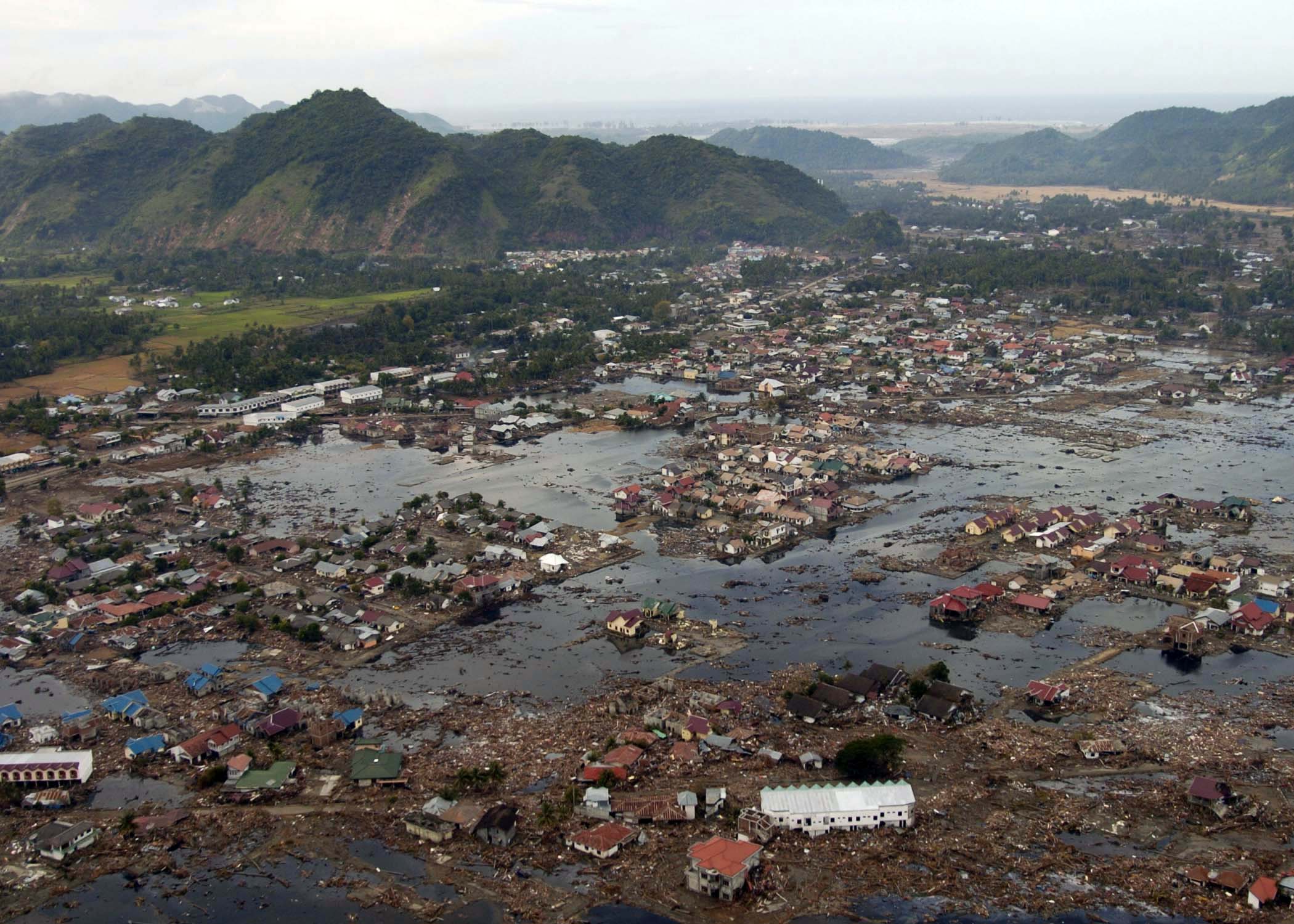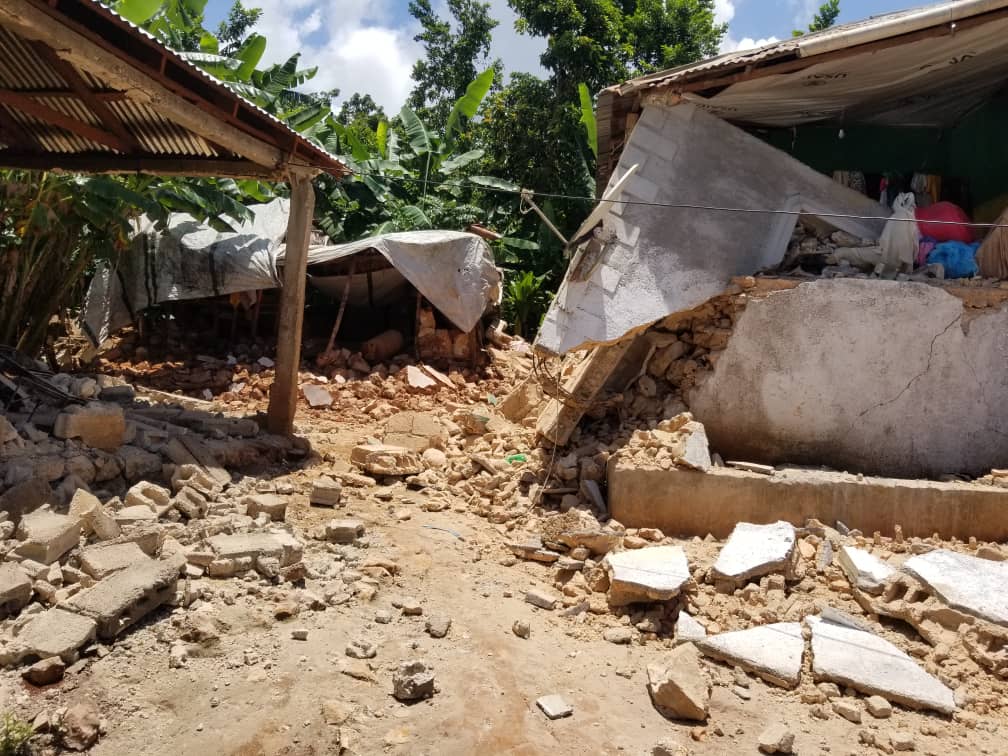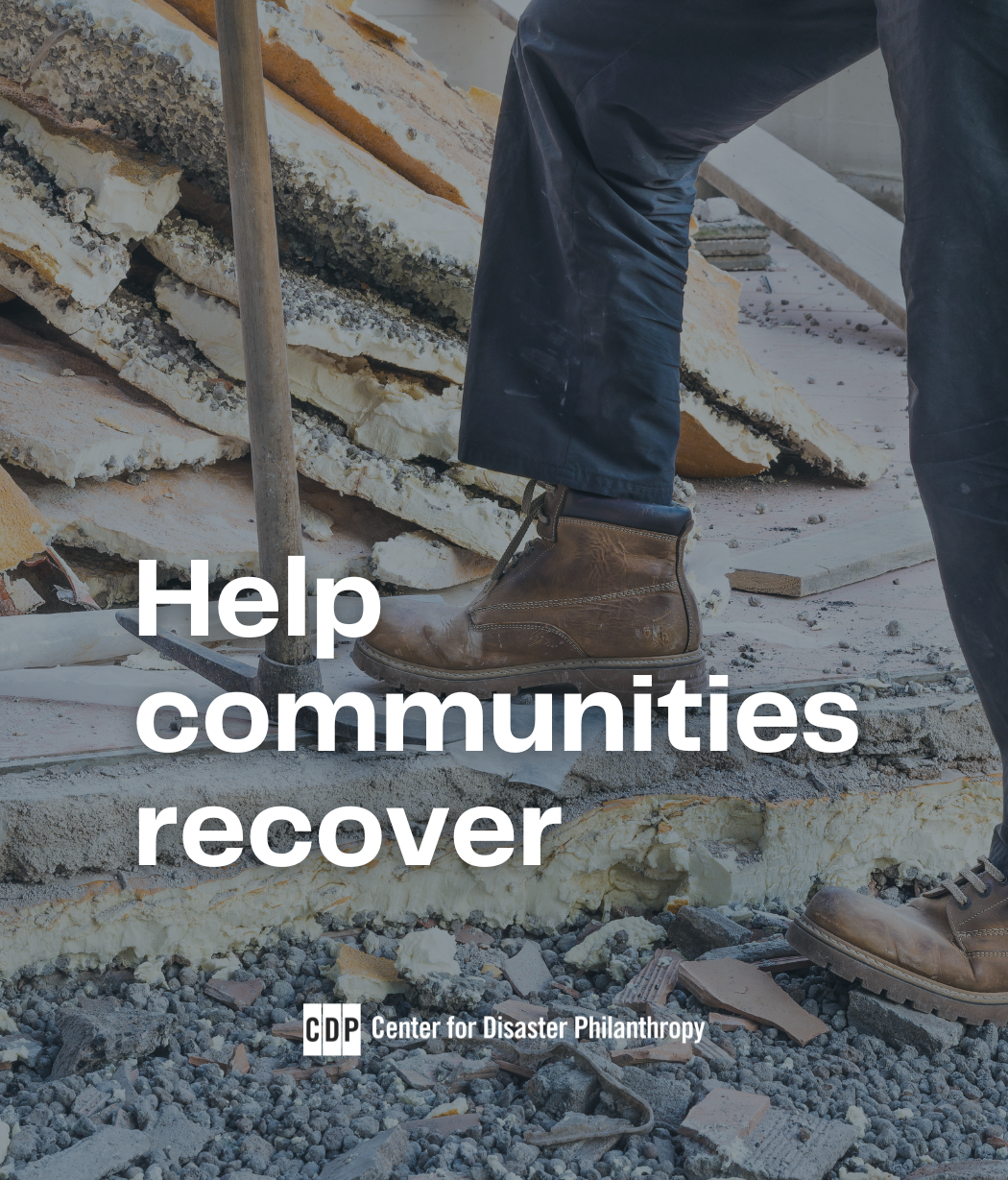
Last updated:
Indian Ocean Tsunami

Overview
A powerful 9.0 earthquake struck in the Indian Ocean in 2004, causing massive destruction in Indonesia. As a result of the earthquake, a monumental tsunami arose, devastating the coasts of 14 countries and claiming more that 283,000 lives.
On December 26, 2004, a powerful 9.0 earthquake struck in the Indian Ocean, causing widespread destruction in Banda Aceh and other parts of Aceh, a region of Indonesia. Though an estimated 1,000 people died in the earthquake, it was the tsunami that followed several hours later that brought the most significant loss of life.
The sheer size of the destruction, coupled with the relatively slow holiday news period, drew significant media attention. It also drew a major outpouring of donations from the general public, governments, and private corporations; $1.6 billion was given in U.S. charitable contributions.
(Photo: A village near the coast of Sumatra lays in ruin after the tsunami that struck South East Asia in December 2004. U.S. Navy photo by Photographer’s Mate 2nd Class Philip A. McDaniel)
Two surveys by the Tsunami Evaluation Coalition attributed the giving to the scale of death, the time of year, and peer pressure. However, a TEC Needs Assessment Study found that media coverage and political/institutional factors drove donor decisions. A Georgetown University study called Philanthropic Grantmaking for Disaster Management: Trend Analysis and Recommended Improvements also noted the influence of peer pressure in giving.
Organizations tended to split donations among several international relief agencies, many in turn contracting out services to localized NGOs. As the level of donations was so high, according to the report, some foundations slowed down the allocation of funds for tsunami relief because they believed the receiving agencies would not be able to spend them all for the original purposes. Reserved funds were spared for reconstruction after immediate needs had been addressed. In addition, some NGOs asked donors to give to other emergencies.
What was the impact of this disaster?
In all, 14 countries were affected by the wall of water triggered by the quake, and more than 283,000 people died. The powerful tsunami reached 3,000 miles away to the eastern coast of Africa, strong enough to cause property damage and death. Countries directly affected by the tsunami—Indonesia, Sri Lanka, India, and Thailand—suffered the greatest number of casualties. But Germany and Sweden were fifth and sixth. It is estimated that 2 million people were displaced from their homes worldwide.
Aceh alone suffered 170,000 deaths; recovery efforts were particularly troublesome. As Aceh had been under martial law since 2003, international aid groups and journalists had been forced out. No disaster planning was in place, and residents were suspicious of military officials as they attempted to carry out relief efforts.
Facts and stats
- Generous funding brought many new agencies into the region, often without sufficient experience. It also forced some established agencies into activities outside their normal area of expertise. The excess funds also reduced incentives to critically assess program success.
- In the hardest-hit areas of Indonesia, four times as many women died as men. This data also showed that the young—under age nine—and the elderly—over 60—were disproportionately affected.
- Post-tsunami evaluations showed a lack of foresight and strategic thinking in terms of shelter provision. Disproportionate resources were put into permanent housing, neglecting temporary dwellings until crisis status.
- Because of the heavy media attention focused on the tsunami, private donations almost equaled official giving. This brought a different cash flow, with most cash immediately available. Official pledges often cover more years and are disbursed on an annual basis.
- Lessons have been learned. An earthquake struck the area off the coast of Sumatra in 2012, creating fears of another tsunami. This time, however, eight countries activated warning systems, using news media and mobile phone text messaging to alert area resident. Evacuations were ordered in some low-lying areas. The tsunami did not materialize, but the alerts were issued quickly, and the people responded.
The following was written by CDP’s former President and CEO, Robert G. Ottenhoff on the eighth anniversary of this disaster.
Thailand Tsunami: Eight Years Later Area is Still recovering; Movie Highlights Tragedy
Natural disasters are sometimes so big and so devastating it’s hard to fully grasp their impact on people and communities. Occasionally we’ll see television coverage – especially if it’s in the United States – of the human drama of the disaster and the relief effort. But once the television coverage is gone, we’re left only with numbers – the number of dead, the number of homeless, and the insurance industry’s estimate of property losses.
That’s why I’m such a big believer in the power of storytelling, particularly through film, videos and audio. Storytelling helps us feel and experience a disaster in a way that no report can do. And sometimes to truly understand a disaster we need to follow the experience of a few who personally experienced the disaster. Not numbers; but people. It is through one’s story that we can make the human connection.
Friday I went to opening night of the movie The Impossible, a story based on a true story of a Spanish family vacationing in Thailand during the 2004 tsunami – a disaster that claimed more than 230,000 lives, one of the deadliest natural disasters in history. Over $13 billion was donated worldwide in private and public funds to help with relief and rebuilding efforts.
The Impossible is not a perfect film by any means. It’s a little melodramatic for my taste. The story focuses on one well-off family on holiday whom had the ability and financial resources to get the care they needed to survive. Unfortunately, we see very little in this movie about the hundreds of thousands of local families affected by this tsunami.
But for all us committed to disaster philanthropy, The Impossible is must-see movie. It gives an amazing portrayal of what it must be like to be caught up in a powerful tsunami. It is a terrifying experience, and you can feel it as you watch the first 20-minutes of the film as the tsunami wave washes over the resort and two of the protagonists’’ struggle to save themselves and each other.
Second, the movie helps us feel the post-tsunami scenes of the chaos, with the heart-breaking human drama of treating the wounded; searching for lost loved ones and managing the dead and destruction. It gives a glimpse of what it must be like for those trapped in a disaster, and for those trying to help.
The Center for Disaster Philanthropy is teaming up with the Tsunami Plus 10 Project to present this movie as an opportunity to renew interest in the aftermath of the areas affected by the tsunami and the need for disaster philanthropy to focus on the full arc of disaster, including a long term commitment to recovery and rebuilding. While the movie ends on a positive note, there are thousands of stories of trauma and loss still playing out today, eight years later.
You can learn more about the project here: http://tsunamiplus10.org/FilmGuide
It is worth your time. Take a few hours over the holiday season to see the movie and take a look at the Tsunami Project website. Take a few people that you love to go with you to see the movie.
What would you do if your family were caught in a disaster? What will you do next time a disaster strikes? Is it so impossible to think your next response will be different?
Contact CDP
Recovery updates
If you are a responding NGO or a donor, please send updates on how you are working in this crisis to tanya.gulliver-garcia@disasterphilanthropy.org.
More ways to help
Donors seeking to aid in the long-term recovery of the many countries affected by the tsunami:
- Fund capacity-building programs. In some areas, the local economy was virtually destroyed, especially in fishing villages. Micro-loans and training programs continue to be needed to provide income generation as families and communities move into long-term redevelopment.
- Education remains a vital need. In Calang, one of the hardest-hit areas and Aceh’s capital, approximately 90 percent of teachers were killed in the tsunami. Rebuilding the educational capacity of the region is critical and teacher training and professional development still is desperately needed.
- Target programs to help women understand and exert their legal rights. Prior to the tsunami, women were not allowed to own property in Banda Aceh. The tsunami also destroyed land ownership records. Re-establishing land rights was particularly difficult for women who had lost spouses or parents in the disaster. While NGOs working in the immediate aftermath of the disaster were able to re-establish a woman’s property ownership, much work remains. In many cases, women do not understand their legal rights and courts are more likely to heed local tradition than law.
Learn more
Resources

Earthquakes
Striking without warning, earthquakes often are among the most devastating disasters. Caused by the movement of plates along fault lines on the earth’s surface, earthquakes often leave a monumental path of instant death and destruction.

Education
Right alongside emergency shelter, nutrition, protection and other essentials, education provides stability, hope, normalcy and resources for the present and the future of any disaster-affected community. A return to the classroom also helps restore a sense of routine for children.

Is your community prepared for a disaster?
Explore the Disaster Playbook
